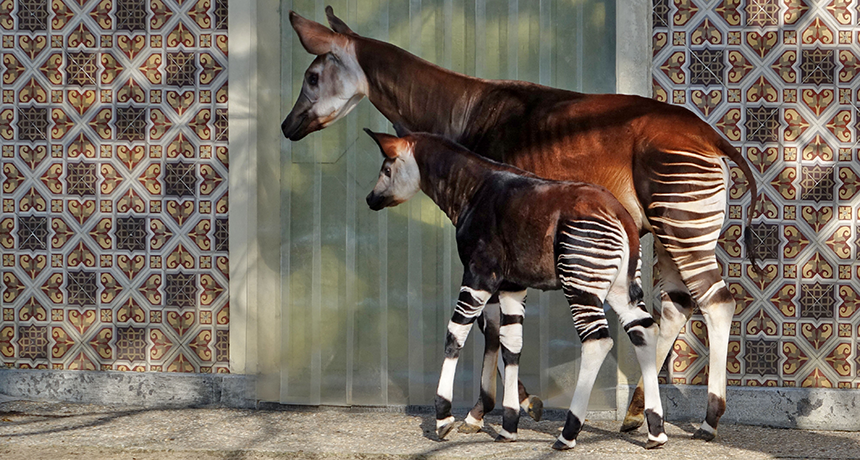canopy (in botany) The top layer of a tree — or forest — where the tallest branches overlap.
endangered An adjective used to describe species at risk of going extinct.
forest An area of land covered mostly with trees and other woody plants.
fruit A seed-containing reproductive organ in a plant.
mammal A warm-blooded animal distinguished by the possession of hair or fur, the secretion of milk by females for feeding their young, and (typically) the bearing of live young.
native Associated with a particular location; native plants and animals have been found in a particular location since recorded history began. These species also tend to have developed within a region, occurring there naturally (not because they were planted or moved there by people). Most are particularly well adapted to their environment.
okapi A hoofed, striped animal, a relative of the giraffe.
ossicones These are horn-like structures on giraffes and okapis. They are not antlers — which are made of keratin, like hair or fingernails. Instead, ossicones are made of cartilage and covered in hair.
understory Plants that grow beneath the canopy, or uppermost level, of the forest.

